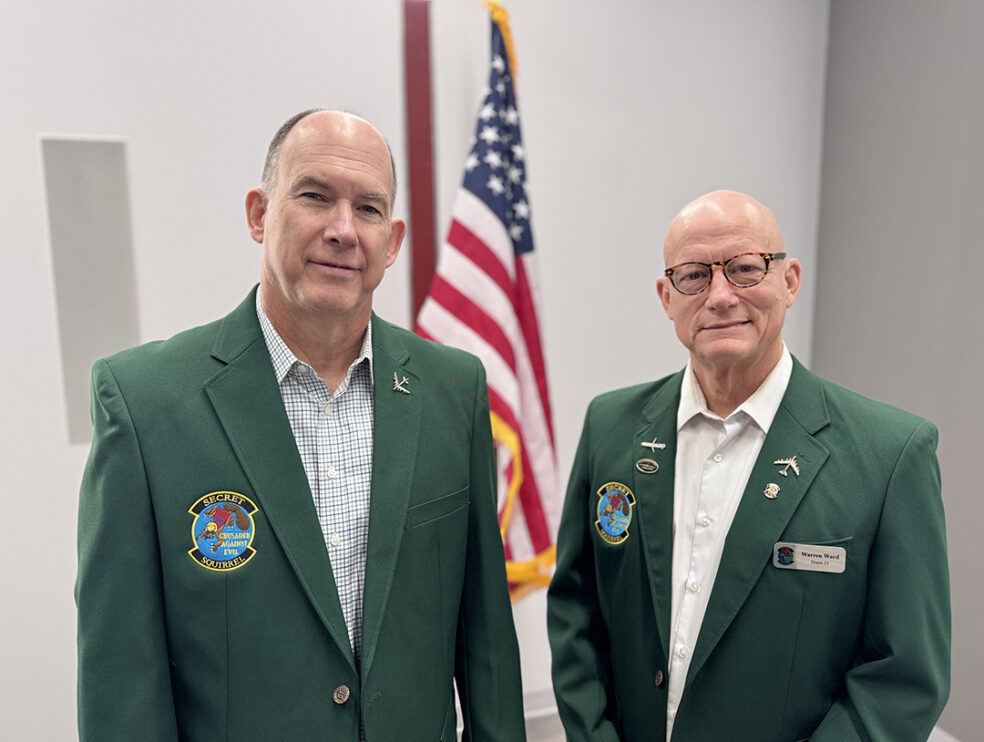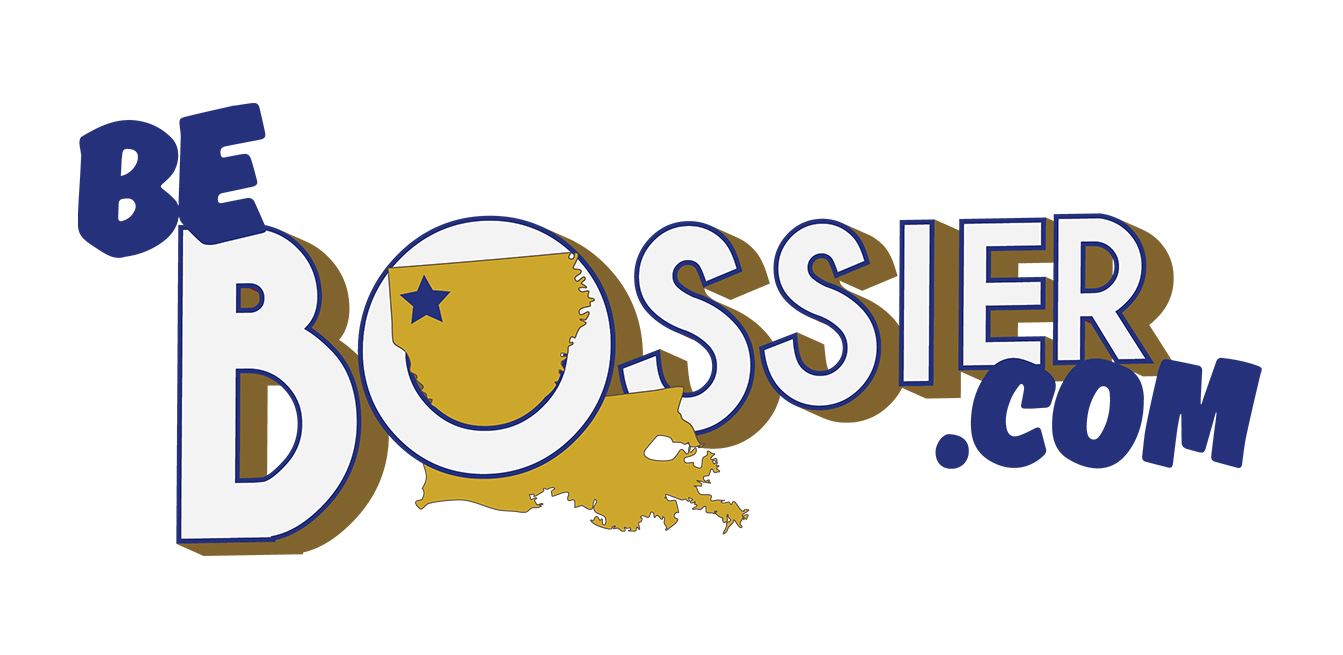The Legacy: Bossier Veterans Reflect on Operation Secret Squirrel

A drizzle fell one morning in early 1991 as the sound of freedom rumbled down the Barksdale Air Force Base runway. Inside two B-52 Stratofortresses, pilots Russ Mathers and Warren Ward felt the weight of what lay ahead.
“We were scared, but it was drilled into us that we had to do this to perfection,” said Ward. “You’re part of a crew and you function as a single body — it’s a well-oiled machine.”
For months, the pair had trained alongside five other aircrews, enduring endless rehearsals, false starts, and sleepless nights. Bound by secrecy, they balanced duty with family tension, waiting to make history.
“We’re literally standing on the shoulders of the giants who made this thing happen and have innovated today to make it even better,” said Ward.
 That day arrived on January 16, 1991. Mathers and Ward — now Bossier City residents — were part of Operation Senior Surprise, better known by its nickname Secret Squirrel.
That day arrived on January 16, 1991. Mathers and Ward — now Bossier City residents — were part of Operation Senior Surprise, better known by its nickname Secret Squirrel.
Their orders: fly halfway around the world, in total radio silence and complete darkness, to strike deep inside Iraq at the very outset of Operation Desert Storm.
The 35-hour flight would set a new world record for the longest combat mission in history, and mark the first combat use of a GPS-guided cruise missile.
“It not only set the stage for U.S. involvement in Desert Storm but set the template for the long-range strike capability that Air Force Global Strike Command (AFGSC) at Barksdale is tasked with today,” said Mathers.
The Waiting
The planning had begun months earlier, just after Iraq invaded Kuwait on August 2, 1990. Crews were briefed on a new, still-classified weapons system and told to prepare—though no one knew when they would be called.
“You show up, do a pre-takeoff briefing, wait around for about two hours, and then get released to go home,” Ward recalled. “It was Groundhog Day.”
Bound by secrecy, they couldn’t discuss the mission — even at home — creating tension with their families.
“My wife said, ‘If (the silence) continues after whatever is going to happen happens, then we’re going to a marriage counselor,’” Ward laughed. “And, 39 years later, she’s still with me.”
Crews filled long, sleepless nights with card games and coffee, glued to the fledgling 24-hour news network CNN, watching world events unfold before them.
“I remember watching CNN, knowing what we were doing in secret, and using that to see if we’re going to go that day. It was a lot of anticipation in your heart,” said Ward.
The Call
As the deadline passed for Iraq to withdraw from Kuwait on Jan. 15, 1991, most of the crew went to their bunks amidst the immediate silence . That silence was broken by a 3:30 a.m. alert.
. That silence was broken by a 3:30 a.m. alert.
At the briefing, rubbing sleep from their eyes, they realized this time was different. Gen. Buck Schuler, commander of the 8th Air Force at the time, told them their mission would carry the same historic weight as the Doolittle Raid on Japan in 1942.
“It was strictly business,” said Ward. “You talk about a pregame, fire-you-up speech? It was like going out on the field at the Superbowl motivational speech.”
The Mission
Taking off under cover of darkness, seven bombers refueled multiple times in midair while navigating with GPS so new it required use of visual landmarks. The missiles they carried couldn’t even fly in the desert’s midday heat, another reason for the night mission.
Over Egyptian airspace, they faced their first major scare when radar locks appeared, and orders came to turn back. Instead, their order were simple: keep flying.
Crossing the Red Sea, they coordinated with U.S. Navy ships below to avoid any itchy trigger fingers from friendly forces just as nervous as they were. Then, one by one, the bombers released their payloads on eight Iraqi command and radar sites.
“Our mission was to make them blind and deaf. We wanted to limit the ability of the Iraqis to communicate and organize their forces,” said Mathers.
When the crews finally returned to Barksdale, they had flown into history. It would be months before the public learned of the top-secret operation that helped cripple Iraq’s defenses in the opening hours of Desert Storm.
The Legacy
 In 2016, on the mission’s 25th anniversary, the Secret Squirrel veterans began holding regular reunions. The quirky nickname had come from the mission’s abbreviation, “SS,” and inspired a custom patch designed by Ward himself. Members wear the emblem proudly on their green blazers at commemorative events.
In 2016, on the mission’s 25th anniversary, the Secret Squirrel veterans began holding regular reunions. The quirky nickname had come from the mission’s abbreviation, “SS,” and inspired a custom patch designed by Ward himself. Members wear the emblem proudly on their green blazers at commemorative events.
That sense of heritage was strengthened by former Air Force Global Strike Commander Gen. Robin Rand, who challenged them to remember the heritage they helped create.
“Airmen really don’t like to brag on themselves. He told us to remember the mission because of its importance for long-range strike capabilities and how that impacts national security,” said Mathers.
Today, Mathers and Ward continue to serve that same mission in new ways.
Mathers now directs STRIKEWERX at the Cyber Innovation Center, developing cutting-edge solutions for AFGSC. Ward leads the Louisiana Tech Research Institute at the National Cyber Research Park, bridging education and real-world defense applications.
Both remain tied to the command they helped define, and to the moment in 1991 when a secret mission changed modern air warfare forever.
As Ward put it, “There’s no other nation on earth that can do a mission like this, even today.”
